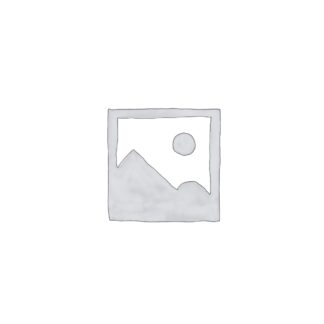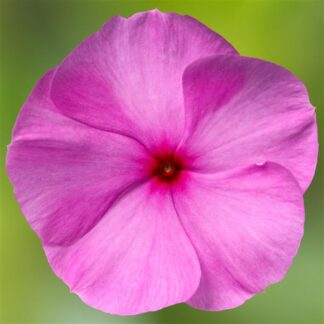Vinca
Grow and Care for Vinca: A Bright and Easy Garden Favorite
If you’re dreaming of a cheerful garden that doesn’t demand too much work, vinca might be just what you need. These vibrant, sun-loving flowers bring color, charm, and resilience to any outdoor space. Whether you’re new to gardening or you’ve been planting for years, vinca annuals are a joy to grow.
Let’s walk through what makes this flower so special, how to plant it, and how to keep it happy and blooming all season long.
What Is Vinca?
Vinca, also known as Madagascar periwinkle, is a hardy, flowering plant that thrives in sunny, dry spots. It’s known for its bright blooms that come in colors like pink, red, purple, lavender, and white—some even have cute little red centers. The flowers are small, flat, and shaped like five-pointed stars.
Although often grown as an annual, vinca can actually act like a perennial in warm areas (Zones 10–11). In cooler climates, it grows quickly and blooms non-stop until the first frost.
Each vinca plant forms a mound of glossy green leaves and spreads nicely across flower beds, garden borders, or containers.
Why Gardeners Love Vinca
Vinca is one of those plants that gardeners return to year after year. Here’s why:
- Thrives in Heat: Vinca doesn’t mind hot weather one bit. In fact, it loves it!
- Drought Tolerant: Once it’s settled in, it barely needs water.
- Blooms for Months: You’ll enjoy flowers from spring all the way into fall.
- Low Maintenance: No fussing, trimming, or special care required.
- Resistant to Pests and Disease: Bugs usually ignore it, and it rarely gets sick.
- Looks Great Anywhere: Vinca fits right into garden beds, planters, or hanging baskets.
If you’re looking for easy-care beauty, it doesn’t get much better than this.
Vinca Plants for Sale
When spring rolls around, you’ll find vinca plants for sale at local nurseries, big-box stores, and online garden shops. They’re usually sold in small pots or flats, ready to pop into your garden or containers.
Here are a few tips for choosing the best plants:
- Look for healthy green leaves with no yellowing or spots.
- Avoid soggy soil or droopy plants—they may be suffering from root problems.
- Buds just about to open are perfect! You’ll get to watch them bloom soon after planting.
Pro tip: Buy early in the season for the best selection.
Types of Vinca
Not all vincas look the same! Here are a few different types you’ll see:
1. Upright Vinca
These are the classic variety. They grow upright and bushy, usually 12–18 inches tall. Ideal for garden beds or as a filler in larger containers.
2. Trailing Vinca
Also called spreading vinca, this type drapes beautifully, making it perfect for hanging baskets and window boxes. Some stay short and wide, while others cascade over the sides of pots.
3. Dwarf Vinca
These stay extra compact, often under 10 inches tall. They’re great for edging, small pots, or tight garden spaces.
Colors include:
- Bright pink
- Deep red
- Lavender
- White with red center
- Soft peach
- Bi-color blends
You can mix and match to create stunning color displays!
Shop for Vinca Plants and Seeds
Showing all 6 results
-

Vinca, Cora® Cascade XDR Apricot
Price range: $2.49 through $7.99 Select options This product has multiple variants. The options may be chosen on the product page -

Vinca, Cora® Cascade XDR Lilac
Price range: $2.49 through $7.99 Select options This product has multiple variants. The options may be chosen on the product page -

Vinca, Cora® Cascade XDR Polka Dot
Price range: $2.49 through $7.99 Select options This product has multiple variants. The options may be chosen on the product page -

Vinca, Cora® Cascade XDR Punch
Price range: $2.49 through $7.99 Select options This product has multiple variants. The options may be chosen on the product page -

Vinca, Cora® Cascade XDR Strawberry
Price range: $2.49 through $7.99 Select options This product has multiple variants. The options may be chosen on the product page -

Vinca, Cora® Cascade XDR White
Price range: $2.49 through $7.99 Select options This product has multiple variants. The options may be chosen on the product page
How to Plant Vinca
Planting vinca is super simple. Even if this is your first time gardening, you’ll do great.
1. Choose a Sunny Spot
Vinca loves full sun. Pick a spot that gets at least 6 hours of sunlight a day. It can handle a bit of shade, but full sun means more blooms.
2. Prepare the Soil
Vinca doesn’t like soggy roots. Use well-draining soil. If your yard soil holds too much water, mix in some compost or sand. You can also plant in raised beds or containers.
3. Give It Space
Plant each vinca about 8 to 12 inches apart. This gives them room to grow and allows air to circulate. Good spacing helps keep plants healthy.
4. Water After Planting
Water gently after planting to help the roots settle. Then, wait for the soil to dry out before watering again. Vinca likes to be on the dry side.
Growing Vinca in Pots
No yard? No problem! Vinca grows beautifully in containers.
Here’s what to do:
- Use pots with drainage holes.
- Fill with a light, fast-draining potting mix.
- Place in full sun.
- Water only when the soil is dry to the touch.
Trailing vinca will spill over the edges of your pots, creating a gorgeous cascade of color. Upright types stay neat and bushy.
How to Care for Vinca
Once planted, vinca practically takes care of itself. Still, here are a few tips to keep it thriving:
1. Watering
Let the soil dry out before watering again. In hot weather, once a week is usually plenty. Avoid overwatering—it’s one of the few things that can cause problems.
2. Feeding
Vinca doesn’t need a lot of fertilizer. You can:
- Add a slow-release fertilizer at planting time, OR
- Use a liquid fertilizer every 4–6 weeks.
Too much feeding can lead to lots of leaves and fewer flowers, so keep it light.
3. No Deadheading Needed
Unlike many flowers, vinca doesn’t need deadheading. It cleans itself, dropping old flowers and blooming again without help.
4. Mulch (Optional)
A thin layer of mulch around your plants helps hold moisture and keeps weeds away. Just don’t pile it right up against the stems—leave a little breathing room.
Common Questions About Vinca
Is vinca an annual or perennial?
Vinca is usually grown as an annual, but in warm climates (Zones 10–11) it can behave like a perennial.
Can vinca grow in shade?
It can tolerate light shade, but it will bloom best in full sun.
How often should I water vinca?
Let the soil dry between waterings. Overwatering is the most common mistake. Once a week is usually enough.
Is vinca good for beginners?
Yes! It’s one of the easiest flowers to grow and takes very little effort to keep looking good.
Will vinca spread?
Trailing types will spread outward. Upright types stay more compact. None are invasive.
Why You’ll Love Growing Vinca
To wrap things up, here’s why vinca deserves a spot in your garden:
- It blooms nonstop from spring to fall.
- It handles heat, drought, and sun like a pro.
- It comes in a rainbow of colors.
- It needs very little care.
- It works in beds, baskets, borders, or containers.
- And—it just makes you smile.
If you’ve ever struggled with fussy flowers or plants that wilt in the summer, vinca is your new best friend. It’s reliable, forgiving, and full of joy.
Let Your Garden Shine
Ready to get started?
🌼 Pick your favorite colors
🌞 Find a sunny spot
🪴 Plant with love
💧 Water when dry
🌸 Enjoy the blooms all season long
Once you grow vinca, you’ll wonder why you waited so long. This little plant brings a whole lot of happiness.
So go ahead—plant vinca this spring and let your garden shine!
Showing all 6 results


